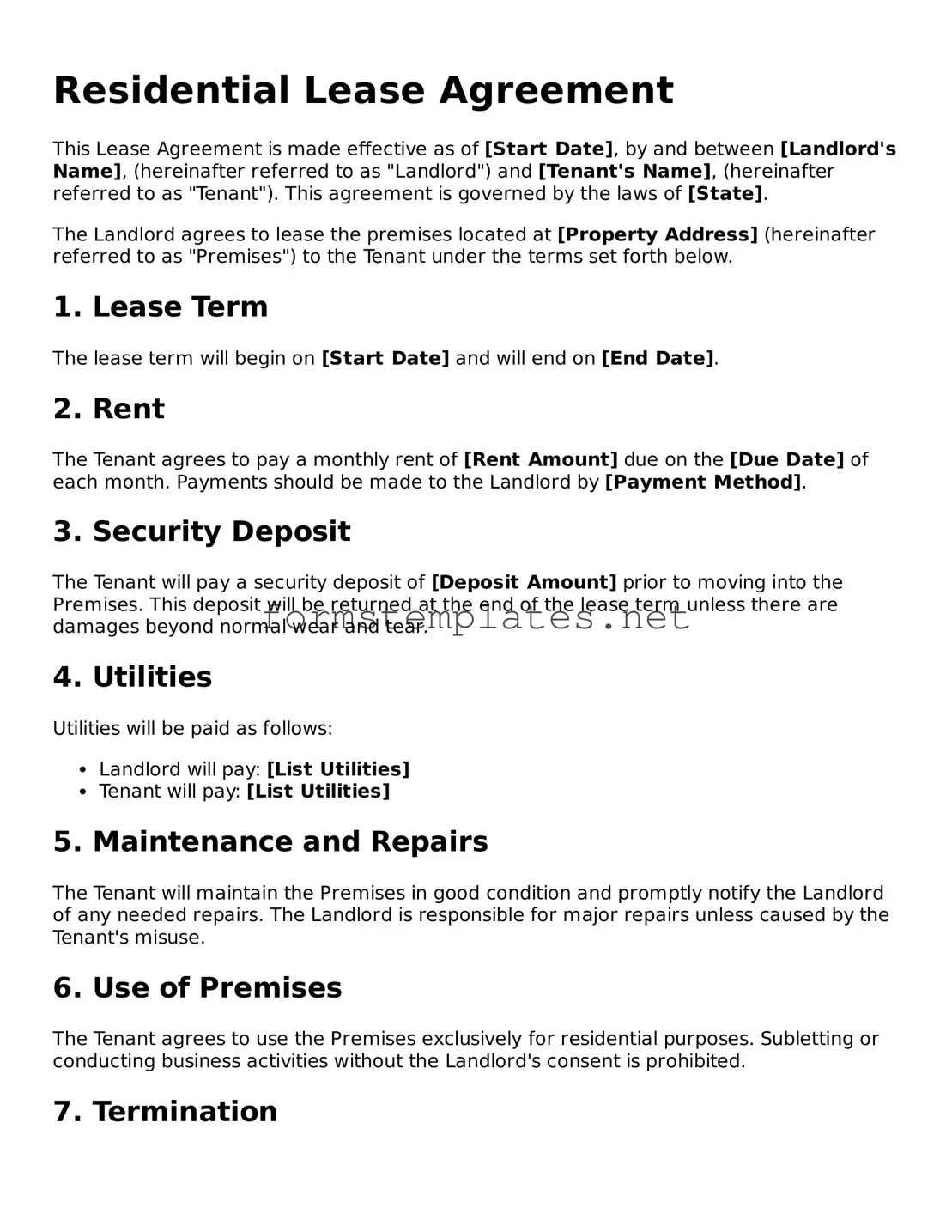Residential Lease Agreement
This Lease Agreement is made effective as of [Start Date], by and between [Landlord's Name], (hereinafter referred to as "Landlord") and [Tenant's Name], (hereinafter referred to as "Tenant"). This agreement is governed by the laws of [State].
The Landlord agrees to lease the premises located at [Property Address] (hereinafter referred to as "Premises") to the Tenant under the terms set forth below.
1. Lease Term
The lease term will begin on [Start Date] and will end on [End Date].
2. Rent
The Tenant agrees to pay a monthly rent of [Rent Amount] due on the [Due Date] of each month. Payments should be made to the Landlord by [Payment Method].
3. Security Deposit
The Tenant will pay a security deposit of [Deposit Amount] prior to moving into the Premises. This deposit will be returned at the end of the lease term unless there are damages beyond normal wear and tear.
4. Utilities
Utilities will be paid as follows:
- Landlord will pay: [List Utilities]
- Tenant will pay: [List Utilities]
5. Maintenance and Repairs
The Tenant will maintain the Premises in good condition and promptly notify the Landlord of any needed repairs. The Landlord is responsible for major repairs unless caused by the Tenant's misuse.
6. Use of Premises
The Tenant agrees to use the Premises exclusively for residential purposes. Subletting or conducting business activities without the Landlord's consent is prohibited.
7. Termination
Either party may terminate this lease agreement by providing [Notice Period] written notice to the other party at least [Days] prior to the end of the lease term.
8. Governing Law
This agreement shall be governed by the laws of the state of [State].
Signatures
By signing below, both parties agree to the terms set forth in this Lease Agreement:
Landlord Signature: ________________________ Date: _______________
Tenant Signature: ________________________ Date: _______________
